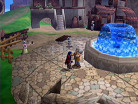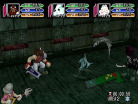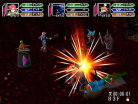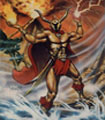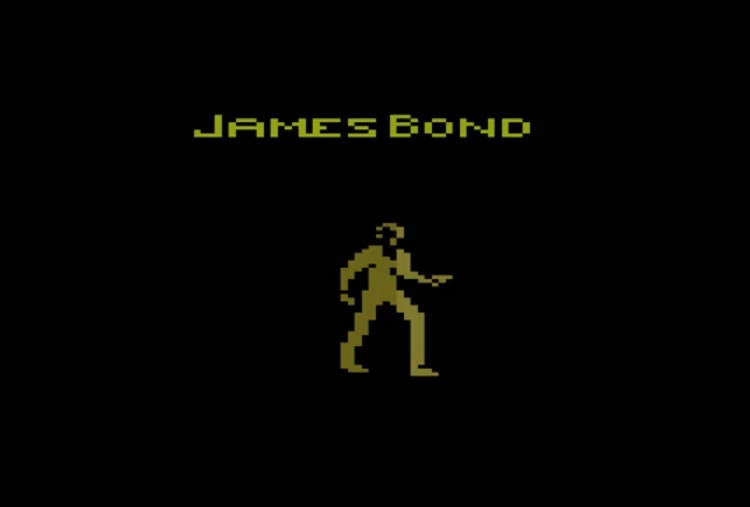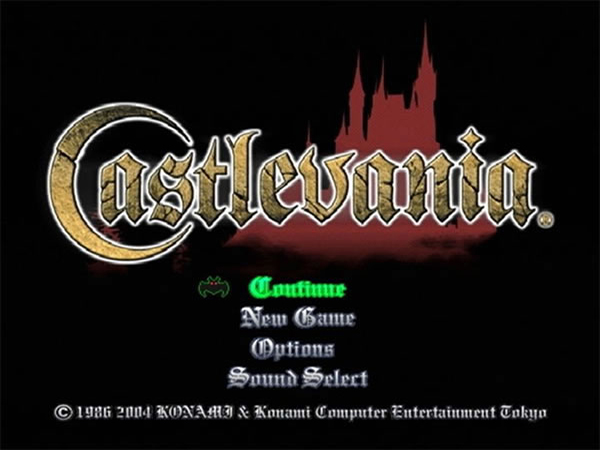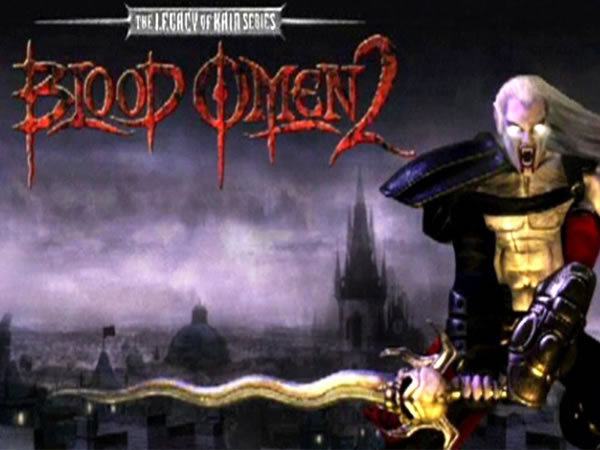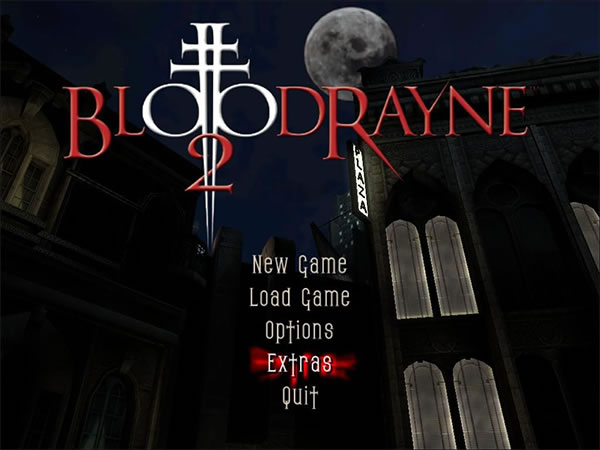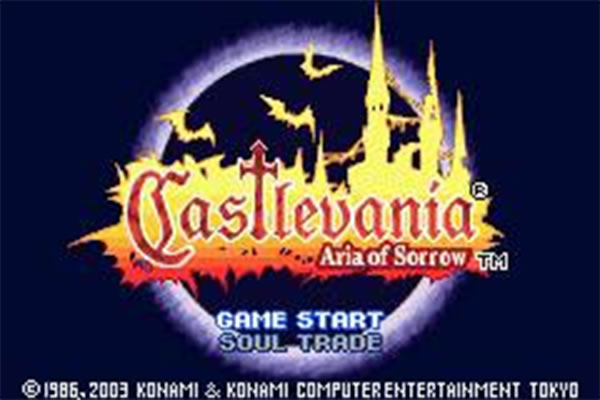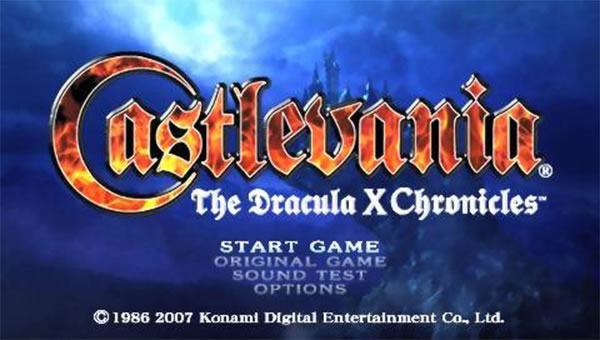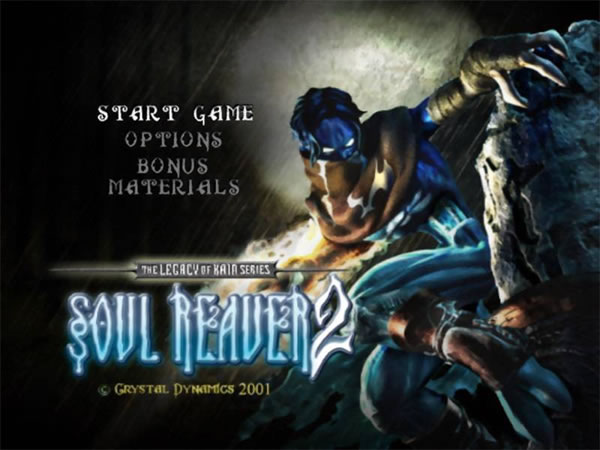- CLASSIC MAGAZINES
- REVIEW CREW
A show recapping what critics thought back
when classic games first came out! - NEXT GENERATION'S BEST & WORST
From the worst 1-star reviews to the best
5-stars can offer, this is Next Generation! - NINTENDO POWER (ARCHIVE)
Experience a variety of shows looking at the
often baffling history of Nintendo Power! - MAGAZINE RETROSPECTIVE
We're looking at the absolutely true history of
some of the most iconic game magazines ever! - SUPER PLAY'S TOP 600
The longest and most ambitious Super NES
countdown on the internet! - THEY SAID WHAT?
Debunking predictions and gossip found
in classic video game magazines! - NEXT GENERATION UNCOVERED
Cyril is back in this spin-off series, featuring the
cover critic review the art of Next Generation! - HARDCORE GAMER MAGAZING (PDF ISSUES)
Download all 36 issues of Hardcore Gamer
Magazine and relive the fun in PDF form!
- REVIEW CREW
- ELECTRONIC GAMING MONTHLY
- ELECTRONIC GAMING MONTHLY RANKS
From Mario to Sonic to Street Fighter, EGM
ranks classic game franchises and consoles! - ELECTRONIC GAMING MONTHLY BEST & WORST
Counting down EGM’s best and worst reviews
going year by year, from 1989 – 2009! - ELECTRONIC GAMING BEST & WORST AWARDS
11-part video series chronicling the ups and
downs of EGM’s Best & Worst Awards!
- ELECTRONIC GAMING MONTHLY RANKS
- GAME HISTORY
- GAME OVER: STORY BREAKDOWNS
Long-running series breaking down game
stories and analyzing their endings! - A BRIEF HISTORY OF GAMING w/ [NAME HERE]
Real history presented in a fun and pithy
format from a variety of game historians! - THE BLACK SHEEP
A series looking back at the black sheep
entries in popular game franchises! - INSTANT EXPERT
Everything you could possibly want to know
about a wide variety of gaming topics! - FREEZE FRAME
When something familiar happens in the games
industry, we're there to take a picture! - I'VE GOT YOUR NUMBER
Learn real video game history through a series
of number-themed episodes, starting at zero! - GREAT MOMENTS IN BAD ACTING
A joyous celebration of some of gaming's
absolute worst voice acting!
- GAME OVER: STORY BREAKDOWNS
- POPULAR SHOWS
- DG NEWS w/ LORNE RISELEY
Newsman Lorne Riseley hosts a regular
series looking at the hottest gaming news! - REVIEW REWIND
Cyril replays a game he reviewed 10+ years
ago to see if he got it right or wrong! - ON-RUNNING FEUDS
Defunct Games' longest-running show, with
editorials, observations and other fun oddities! - DEFUNCT GAMES QUIZ (ARCHIVE)
From online quizzes to game shows, we're
putting your video game knowledge to the test!- QUIZ: ONLINE PASS
Take a weekly quiz to see how well you know
the news and current gaming events! - QUIZ: KNOW THE GAME
One-on-one quiz show where contestants
find out if they actually know classic games! - QUIZ: THE LEADERBOARD
Can you guess the game based on the classic
review? Find out with The Leaderboard!
- QUIZ: ONLINE PASS
- DEFUNCT GAMES VS.
Cyril and the Defunct Games staff isn't afraid
to choose their favorite games and more! - CYRIL READS WORLDS OF POWER
Defunct Games recreates classic game
novelizations through the audio book format!
- DG NEWS w/ LORNE RISELEY
- COMEDY
- GAME EXPECTANCY
How long will your favorite hero live? We crunch
the numbers in this series about dying! - VIDEO GAME ADVICE
Famous game characters answer real personal
advice questions with a humorous slant! - FAKE GAMES: GUERILLA SCRAPBOOK
A long-running series about fake games and
the people who love them (covers included)! - WORST GAME EVER
A contest that attempts to create the worst
video game ever made, complete with covers! - LEVEL 1 STORIES
Literature based on the first stages of some
of your favorite classic video games! - THE COVER CRITIC
One of Defunct Games' earliest shows, Cover
Critic digs up some of the worst box art ever! - COMMERCIAL BREAK
Take a trip through some of the best and
worst video game advertisements of all time! - COMIC BOOK MODS
You've never seen comics like this before.
A curious mix of rewritten video game comics!
- GAME EXPECTANCY
- SERIES ARCHIVE
- NINTENDO SWITCH ONLINE ARCHIVE
A regularly-updated list of every Nintendo
Switch Online release, plus links to review! - PLAYSTATION PLUS CLASSIC ARCHIVE
A comprehensive list of every PlayStation
Plus classic release, including links! - RETRO-BIT PUBLISHING ARCHIVE
A regularly-updated list of every Retro-Bit
game released! - REVIEW MARATHONS w/ ADAM WALLACE
Join critic Adam Wallace as he takes us on a
classic review marathon with different themes!- DEFUNCT GAMES GOLF CLUB
Adam Wallace takes to the links to slice his way
through 72 classic golf game reviews! - 007 IN PIXELS
Adam Wallace takes on the world's greatest spy
as he reviews 15 weeks of James Bond games! - A SALUTE TO VAMPIRES
Adam Wallace is sinking his teeth into a series
covering Castlevania, BloodRayne and more! - CAPCOM'S CURSE
Adam Wallace is celebrating 13 days of Halloween
with a line-up of Capcom's scariest games! - THE FALL OF SUPERMAN
Adam Wallace is a man of steel for playing
some of the absolute worst Superman games! - THE 31 GAMES OF HALLOWEEN
Adam Wallace spends every day of October afraid
as he reviews some of the scariest games ever! - 12 WEEKS OF STAR TREK
Adam Wallace boldly goes where no critic has
gone before in this Star Trek marathon!
- DEFUNCT GAMES GOLF CLUB
- DAYS OF CHRISTMAS (ARCHIVE)
Annual holiday series with themed-episodes
that date all the way back to 2001!- 2015: 30 Ridiculous Retro Rumors
- 2014: 29 Magazines of Christmas
- 2013: 29 Questionable Power-Ups of Christmas
- 2012: 34 Theme Songs of Christmas
- 2011: 32 Game Endings of Christmas
- 2010: 31 Bonus Levels of Christmas
- 2009: 30 Genres of Christmas
- 2008: 29 Controls of Christmas
- 2007: 34 Cliches of Christmas
- 2006: 33 Consoles of Christmas
- 2005: 32 Articles of Christmas
- 2004: 31 Websites of Christmas
- 2003: 29 Issues of Christmas
- 2002: 28 Years of Christmas
- 2001: 33 Days of Christmas
- NINTENDO SWITCH ONLINE ARCHIVE
- REVIEW ARCHIVE
- FULL ARCHIVE
Time Stalkers
Touted as the first "real" role-playing game for the Dreamcast, Time Stalkers takes the random dungeon easy street but still manages to fumble things, resulting in one of the most grating and flawed role-playing experiences out there.
Sent by a mysterious girl to explore an old clock tower, Sword stumbles upon a mysterious book while chasing an unknown assailant. As he opens the book, the clock tower and surrounding terrain are yanked from the world and attached to a magical, floating continent inhabited by several other such outcasts. The master of this strange world immediately labels Sword a "Hero" and sends him on a quest to unite the other Heroes, defeat a great evil, and return everyone to his respective world. The story is traditional RPG fare - the kind of average stuff we've grown to accept and even like. Every other aspect of the game, however, falls far short.
Some advice - if you're ever going to make a game that has high hopes of success, please be sure you understand why people like that type of game in the first place. While Time Stalkers' story is passable enough, its contradictory dungeon, battle, and experience system undermines any hope you may have had of enjoying this game.
Time Stalkers, like Ubisoft's Evolution, takes a development shortcut and substitutes randomly generated dungeons for actual map design. As a result, all story development must take place in the town, turning the dungeons into endless battle sequences. Were Time Stalkers one of the few RPGs in which battles are actually fun, this wouldn't be a problem. Unfortunately, the battle system is as stale as humanly imaginable, and it even includes ancient interface problems that other RPGs had long ago gotten over ( let alone now!). You can have only one of the main characters in your party at a time, which essentially translates to having only one useful character in your party. To fill the other two slots, you can catch monsters a la Pokemon. When you encounter the roaming beasties in the dungeons, the characters line up to fight. In each area there are four spots for characters to inhabit, leaving one open for movement. Each attack has a different range, meaning that one's monsters may not always be able to reach their opponents. However, not all monsters can move to another square, thereby trapping them in a position from which they cannot attack. This, in turn, traps the main character from attacking. Additionally, when you give the command to attack, you are giving the command to attack the location the monster is in, not the monster itself.
Reminiscent of the original Final Fantasy, if the monster moves before your attack connects, your character will strike nothing but the space the monster once occupied. This looks particularly amusing when you are attacking a monster in the back row and it moves forward, causing the attacker to run right through the monster, swipe at nothing, and then run back through the monster for good measure.
Every weapon has multiple attack techniques that it can employ, each requiring a varying number of vitality points per attack. For the most part, these attacks aren't well balanced; making an everyday weapon change potentially fatal. There is almost no point to gaining experience or developing one's character in Time Stalkers - every time you start a dungeon, your level drops to one! When you finish the dungeon, your level drops to one again! So the point of going into dungeons is to advance the story and get stuff. However, chances are you won't be able to use your good weapons or armor at level one. Additionally, you are artificially limited to entering a dungeon with only four items on your person. Thus, the primary point of items is to be sold. The only permanent improvement you get from completing dungeons is that you earn spells and skills. However, many spells and skills can't be used until the characters' stats have reached a certain level. Thus, your characters essentially start from square one every time they enter a dungeon.
Every battle earns experience for the characters, and levels raise the characters' stats. Additionally, upon completing a floor of the dungeon, you can allocate bonus points to characters that lack stats to let them use their spells and skills. The difficulty of the monsters increases as the hero's level increases, ensuring the game is a constant challenge. With this system in place, however, one really must wonder why the game doesn't let you keep your experience from dungeon to dungeon. With the current experience system, you don't feel as though your characters are advancing or improving, despite the slowly growing list of skills and spells.
There are plenty of interesting little side things to do in Time Stalkers, but none of them make the game particularly worth playing. Having a lot of excess development time on its hands, Climax programmed ten VMS games that can be bought and collected. A majority of the games are pretty worthless. The most interesting game is a miniature paint program that lets you draw a picture and display it in the gallery attached to Sword's house. Sword can also upgrade his monster pen and his house, both of which cost a lot of money. You can also sign up for bounties with the leather-clad rabbit on the Wonderland-esque island in order to fund any carpentry efforts that you might desire.
So the game doesn't play well. In these days of high technology, one would at least hope that the game would be polished enough to help draw attention away from the lack of design thought. Unfortunately, Time Stalkers is anything but polished. While hardly bad looking, the game definitely isn't up to snuff for the Dreamcast, and certainly doesn't hold up well today. Textures are often blurry, the character models are hideously joint-heavy, and the dungeons are extremely boring and repetitive to look at. The characters animate stiffly and unrealistically, while their laughable, disjointed shadows dance on the ground under them. While the frame rate is nice and smooth at all times, the game's collision detection is a joke, and the camera is confusing. The game feels more like a high-resolution PlayStation game than a cutting-edge Dreamcast game. Time Stalkers' characters are universally ugly - the heinous character portraits will make some players wonder why Climax has used this same artist for so long. Climax has never been big in the sound department, and Stalkers is no exception. While Climax has fortunately eliminated the boopy talking noise that usually comes with the dialogue, the game's sound effects are all generic synthed swishes and clanks. Voice work would've been a plus during some of the extremely long and boring dialogue sequences; at the very least, it would have familiarized us with the characters, but Climax obviously didn't feel the same way. The game's tunes are boring, uninteresting, and very repetitive. Not that a translation can save a poor game, but in Time Stalkers it's actually pretty good and gives us hope for when Sega has something better to localize.
Because the game has so many problems, you really must wonder how it was in development for so long without someone sitting down and saying, Wow, this game isn't fun or good to look at! Sega would've been better off with no role-playing game at all than to come out with just Time Stalkers. If your looking for a Dreamcast role-playing game pick up something like Evolution, Grandia 2, or Skies of Arcadia.
Sent by a mysterious girl to explore an old clock tower, Sword stumbles upon a mysterious book while chasing an unknown assailant. As he opens the book, the clock tower and surrounding terrain are yanked from the world and attached to a magical, floating continent inhabited by several other such outcasts. The master of this strange world immediately labels Sword a "Hero" and sends him on a quest to unite the other Heroes, defeat a great evil, and return everyone to his respective world. The story is traditional RPG fare - the kind of average stuff we've grown to accept and even like. Every other aspect of the game, however, falls far short.
Some advice - if you're ever going to make a game that has high hopes of success, please be sure you understand why people like that type of game in the first place. While Time Stalkers' story is passable enough, its contradictory dungeon, battle, and experience system undermines any hope you may have had of enjoying this game.
Time Stalkers, like Ubisoft's Evolution, takes a development shortcut and substitutes randomly generated dungeons for actual map design. As a result, all story development must take place in the town, turning the dungeons into endless battle sequences. Were Time Stalkers one of the few RPGs in which battles are actually fun, this wouldn't be a problem. Unfortunately, the battle system is as stale as humanly imaginable, and it even includes ancient interface problems that other RPGs had long ago gotten over ( let alone now!). You can have only one of the main characters in your party at a time, which essentially translates to having only one useful character in your party. To fill the other two slots, you can catch monsters a la Pokemon. When you encounter the roaming beasties in the dungeons, the characters line up to fight. In each area there are four spots for characters to inhabit, leaving one open for movement. Each attack has a different range, meaning that one's monsters may not always be able to reach their opponents. However, not all monsters can move to another square, thereby trapping them in a position from which they cannot attack. This, in turn, traps the main character from attacking. Additionally, when you give the command to attack, you are giving the command to attack the location the monster is in, not the monster itself.
Reminiscent of the original Final Fantasy, if the monster moves before your attack connects, your character will strike nothing but the space the monster once occupied. This looks particularly amusing when you are attacking a monster in the back row and it moves forward, causing the attacker to run right through the monster, swipe at nothing, and then run back through the monster for good measure.
Every weapon has multiple attack techniques that it can employ, each requiring a varying number of vitality points per attack. For the most part, these attacks aren't well balanced; making an everyday weapon change potentially fatal. There is almost no point to gaining experience or developing one's character in Time Stalkers - every time you start a dungeon, your level drops to one! When you finish the dungeon, your level drops to one again! So the point of going into dungeons is to advance the story and get stuff. However, chances are you won't be able to use your good weapons or armor at level one. Additionally, you are artificially limited to entering a dungeon with only four items on your person. Thus, the primary point of items is to be sold. The only permanent improvement you get from completing dungeons is that you earn spells and skills. However, many spells and skills can't be used until the characters' stats have reached a certain level. Thus, your characters essentially start from square one every time they enter a dungeon.
Every battle earns experience for the characters, and levels raise the characters' stats. Additionally, upon completing a floor of the dungeon, you can allocate bonus points to characters that lack stats to let them use their spells and skills. The difficulty of the monsters increases as the hero's level increases, ensuring the game is a constant challenge. With this system in place, however, one really must wonder why the game doesn't let you keep your experience from dungeon to dungeon. With the current experience system, you don't feel as though your characters are advancing or improving, despite the slowly growing list of skills and spells.
There are plenty of interesting little side things to do in Time Stalkers, but none of them make the game particularly worth playing. Having a lot of excess development time on its hands, Climax programmed ten VMS games that can be bought and collected. A majority of the games are pretty worthless. The most interesting game is a miniature paint program that lets you draw a picture and display it in the gallery attached to Sword's house. Sword can also upgrade his monster pen and his house, both of which cost a lot of money. You can also sign up for bounties with the leather-clad rabbit on the Wonderland-esque island in order to fund any carpentry efforts that you might desire.
So the game doesn't play well. In these days of high technology, one would at least hope that the game would be polished enough to help draw attention away from the lack of design thought. Unfortunately, Time Stalkers is anything but polished. While hardly bad looking, the game definitely isn't up to snuff for the Dreamcast, and certainly doesn't hold up well today. Textures are often blurry, the character models are hideously joint-heavy, and the dungeons are extremely boring and repetitive to look at. The characters animate stiffly and unrealistically, while their laughable, disjointed shadows dance on the ground under them. While the frame rate is nice and smooth at all times, the game's collision detection is a joke, and the camera is confusing. The game feels more like a high-resolution PlayStation game than a cutting-edge Dreamcast game. Time Stalkers' characters are universally ugly - the heinous character portraits will make some players wonder why Climax has used this same artist for so long. Climax has never been big in the sound department, and Stalkers is no exception. While Climax has fortunately eliminated the boopy talking noise that usually comes with the dialogue, the game's sound effects are all generic synthed swishes and clanks. Voice work would've been a plus during some of the extremely long and boring dialogue sequences; at the very least, it would have familiarized us with the characters, but Climax obviously didn't feel the same way. The game's tunes are boring, uninteresting, and very repetitive. Not that a translation can save a poor game, but in Time Stalkers it's actually pretty good and gives us hope for when Sega has something better to localize.
Because the game has so many problems, you really must wonder how it was in development for so long without someone sitting down and saying, Wow, this game isn't fun or good to look at! Sega would've been better off with no role-playing game at all than to come out with just Time Stalkers. If your looking for a Dreamcast role-playing game pick up something like Evolution, Grandia 2, or Skies of Arcadia.
HOME |
CONTACT |
NOW HIRING |
WHAT IS DEFUNCT GAMES? |
NINTENDO SWITCH ONLINE |
RETRO-BIT PUBLISHING
Retro-Bit |
Switch Planet |
The Halcyon Show |
Same Name, Different Game |
Dragnix |
Press the Buttons
Game Zone Online | Hardcore Gamer | The Dreamcast Junkyard | Video Game Blogger
Dr Strife | Games For Lunch | Mondo Cool Cast | Boxed Pixels | Sega CD Universe | Gaming Trend
Game Zone Online | Hardcore Gamer | The Dreamcast Junkyard | Video Game Blogger
Dr Strife | Games For Lunch | Mondo Cool Cast | Boxed Pixels | Sega CD Universe | Gaming Trend
Copyright © 2001-2025 Defunct Games
All rights reserved. All trademarks are properties of their respective owners.
All rights reserved. All trademarks are properties of their respective owners.






